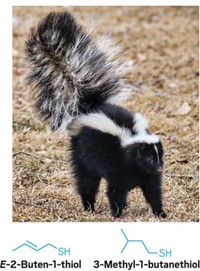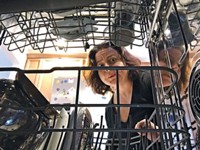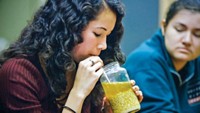Advertisement
Grab your lab coat. Let's get started
Welcome!
Welcome!
Create an account below to get 6 C&EN articles per month, receive newsletters and more - all free.
It seems this is your first time logging in online. Please enter the following information to continue.
As an ACS member you automatically get access to this site. All we need is few more details to create your reading experience.
Not you? Sign in with a different account.
Not you? Sign in with a different account.
ERROR 1
ERROR 1
ERROR 2
ERROR 2
ERROR 2
ERROR 2
ERROR 2
Password and Confirm password must match.
If you have an ACS member number, please enter it here so we can link this account to your membership. (optional)
ERROR 2
ACS values your privacy. By submitting your information, you are gaining access to C&EN and subscribing to our weekly newsletter. We use the information you provide to make your reading experience better, and we will never sell your data to third party members.
Analytical Chemistry
Chocolate For Turquoise, Wiping Away Bacteria
by Jyllian Kemsley
April 4, 2011
| A version of this story appeared in
Volume 89, Issue 14
A decent bar of chocolate will set you back a few bucks these days, but a thousand years ago the treat—or at least the plants used to make it—may have traded for far more.
Archaeologists studying artifacts discovered in what is now southern Mexico and Central America have traced the chemical composition of TURQUOISE mosaic tiles to mines in what is now New Mexico. But researchers didn't know what valuable substance was exchanged for the pretty, blue-green mineral back around A.D. 900–1400.
The answer may be chocolate, report University of Pennsylvania archaeologist Dorothy K. Washburn and Bristol-Myers Squibb scientists William N. Washburn and Petia A. Shipkova. Following up on a 2009 report of cacao on pottery shards from New Mexico's Chaco Canyon (Proc. Natl. Acad. Sci. USA, DOI: 10.1073/pnas.0812817106), the researchers rinsed the insides of 75 pottery vessels with water and then looked at the chemical composition of the condensed rinsate using liquid chromatography/mass spectrometry.
They found cacao marker theobromine, its isomer theophylline, and caffeine in 50 of the artifacts they tested (J. Archaeol. Sci., DOI: 10.1016/j.jas.2011.02.029). No theobromine-carrying plants are native to the American Southwest, whereas cacao plants are native to the tropical coastal lowlands of Central America.
Notably, the team found theobromine in pottery from a variety of sites, not just those linked to cultural elites. "The most surprising discovery was finding cacao in local pots used by small site farmers, implying that the cacao was widely consumed throughout the American Southwest," Dorothy Washburn tells Newscripts. What's not clear is who traveled the farthest to make the trades: those wanting the turquoise or those wanting the chocolate.
If you yourself have been turning to chocolate to while away the last of the winter blues, undoubtedly you've followed GOOD HEALTH HABITS and washed your hands before eating. But it can be trickier to keep clean things that your hands touch frequently—for example, your phone, your keyboard, or your copy of C&EN.
Now, researchers from the University of Alberta have some advice: Wipe objects three times with a saline-moistened wipe or once with a disinfectant wipe. (Okay, maybe this won't work for cleaning C&EN.)
Led by pediatrics professor Sarah E. Forgie, the group streaked suspensions of several species of bacteria and yeast onto sterile plastic petri dishes.
The researchers then wiped the dishes one, three, or five times with tissues wet with saline or with a variety of disinfectant wipes: 5% ethanol, 0.5% hydrogen peroxide, 14.30% isopropanol and 0.23% diisobutylphenoxyethyl dimethyl benzyl ammonium chloride, or 0.5% chlorhexidine and 70% isopropyl alcohol. Finally, they tested the plates to see how many microorganisms were left behind (Am. J. Infect. Control, DOI: 10.1016/j.ajic.2010.08.014).
Forgie and colleagues found that three is the magic number. On average, three swipes with any kind of wipe reduced the bacterial load on the plates by 88% (the yeast didn't grow well enough for a complete statistical analysis). Five swipes didn't get the plates significantly cleaner. If you're going to swipe just once, however, a disinfectant wipe is the best choice.
The fact that all the wipes performed similarly in the multiple-swipe tests indicates that mechanical removal of microorganisms is key, not some sort of chemical action from the disinfectant, Forgie says. She'd like to go on to test dry tissues or tissues wet with sterile or tap water, as well as objects such as cell phones and pagers.
In the meantime, the Newscripts gang will endeavor to keep our pages as pristine as possible.






Join the conversation
Contact the reporter
Submit a Letter to the Editor for publication
Engage with us on Twitter